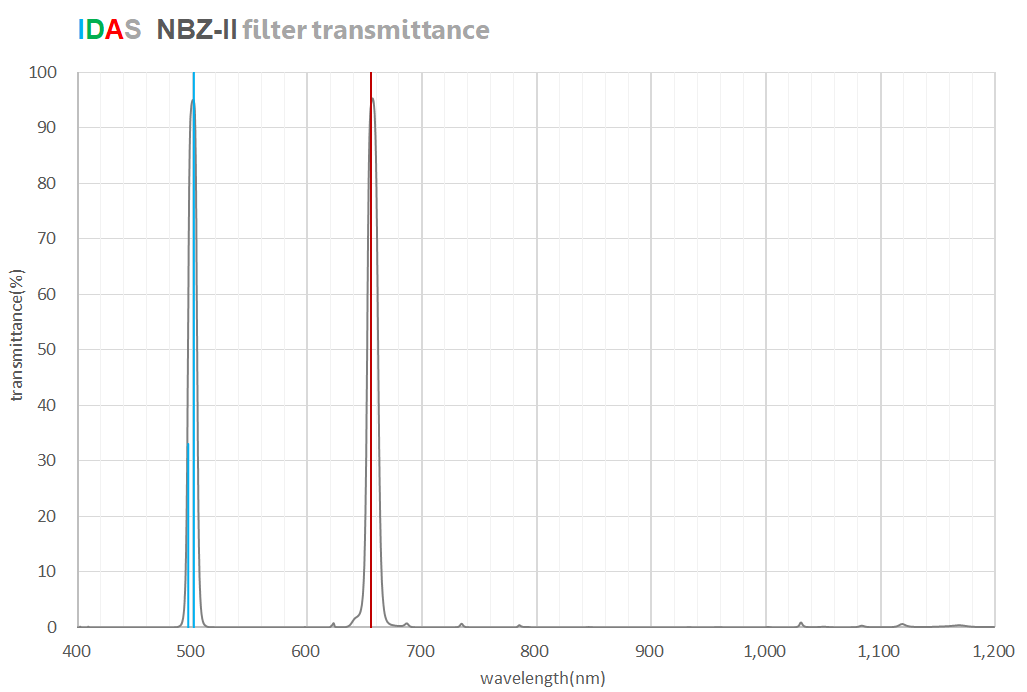
The IDAS NBZ-II is a new dual band nebula booster filter - the successor to the NBZ (NBZex) filter. The FWHM of the NBZ-II is 8nm (+/=0.4nm) at OIII, and *9.5nm (+/-0.4nm) at H-alpha respectively. This has the same anti-Haloing characteristics as the NBZ did. For this product, we will provide a test report of the actually measured optical properties with each individual NBZ-II filter piece we ship.
*We originally designed this value to be 10nm, but after runing some production lots, we have now confirmed that the average is 9.5nm (+/-0.4nm).
Feature:
The transmittance curve of interference filters will naturally shift towards the shorter wave length side against oblique light incidence, and this tendency will be more noticeable as the inncidence angle becomes higher as shown in the following figure.
Some of the competitive 7nm or narrower filters will decrease in transmittance by 50% or more when used in a fast optical system (around F2), while the NBZ-II retains 80% or more of the transmittance under the same conditions.
Gallery:
Click on each of the thumbnails so you can see a larger photo of each.
| Thumnail |
Target |
Filter |
Camera |
Telescope |
Remarks |
Photo taken by: |
NBZ-II-data.png) |
NGC Planetary Nebula |
NBZ-II |
SVBONY SV705C |
Takahashi Epsilon 200 800mm F4 Astrograph |
Exp 3min x 116 frames, total exp 348 min |
Mru. Uto |
NBZ-II-data.png) |
NGC6888 Crescent Nebula |
NBZ-II |
SVBONY SV705C |
Takahashi Epsilon 200 800mm F4 Astrograph |
Exp 3 min x 30 frames, total exp 90 min |
Mr. Uto |
|
Rosette Nebula |
NBZ-II |
ASI294MC Pro |
HD1100 HyperStar V4 530mm F1.9 |
Exp 60 secs x 15 |
Mr. Numazawa |
|
Cone Nebula |
NBZ-II |
Asi294mc Pro |
HD1100 HyperStar V4 530mm F1.9 |
Exp 60 secs x 18 |
Mr. Numazawa |
|
Horsehead Nebula |
NBZ-II |
Asi294mc Pro |
HD1100 HyperStar V4 530mm F1.9 |
Exp 60 secs x 25 |
Mr. Numazawa |
 |
Soul Nebula |
NBZ-II |
Asi294mc Pro |
HD1100 HyperStar V4 530mm F1.9 |
Exp 60 secs x 60 |
Mr. Numazawa |
|
Lobster Claw Nebula |
NBZ-II |
Asi294mc Pro |
HD1100 HyperStar V4 530mm F1.9 |
Exp 60 secs x 50 |
Mr. Numazawa |
Landscape Astrophotography:
These days more and more people make use of IDAS DRE/DRT filters for landscape astrophotography. Here are the links to valuable reference sources to learn about landscape astrophoto graphy - provided by courtesies of Mr. Bernat Font.
- https://bernatfont.wixsite.com/mallorca-landscape/post/sistema-de-filtros-drop-in-filtros-idas
- https://www.sonyalphaforum.com/topic/21934-drop-in-filters-idas-filters-for-widefield-astrophoto/#comment-70164
- https://www.dpreview.com/forums/post/68239480
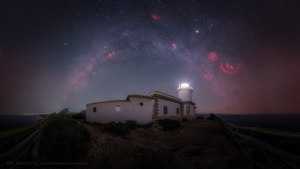 <- you can click to enlarge <- you can click to enlarge
a photo sample shot with NBZ-II DRE
Simulations:
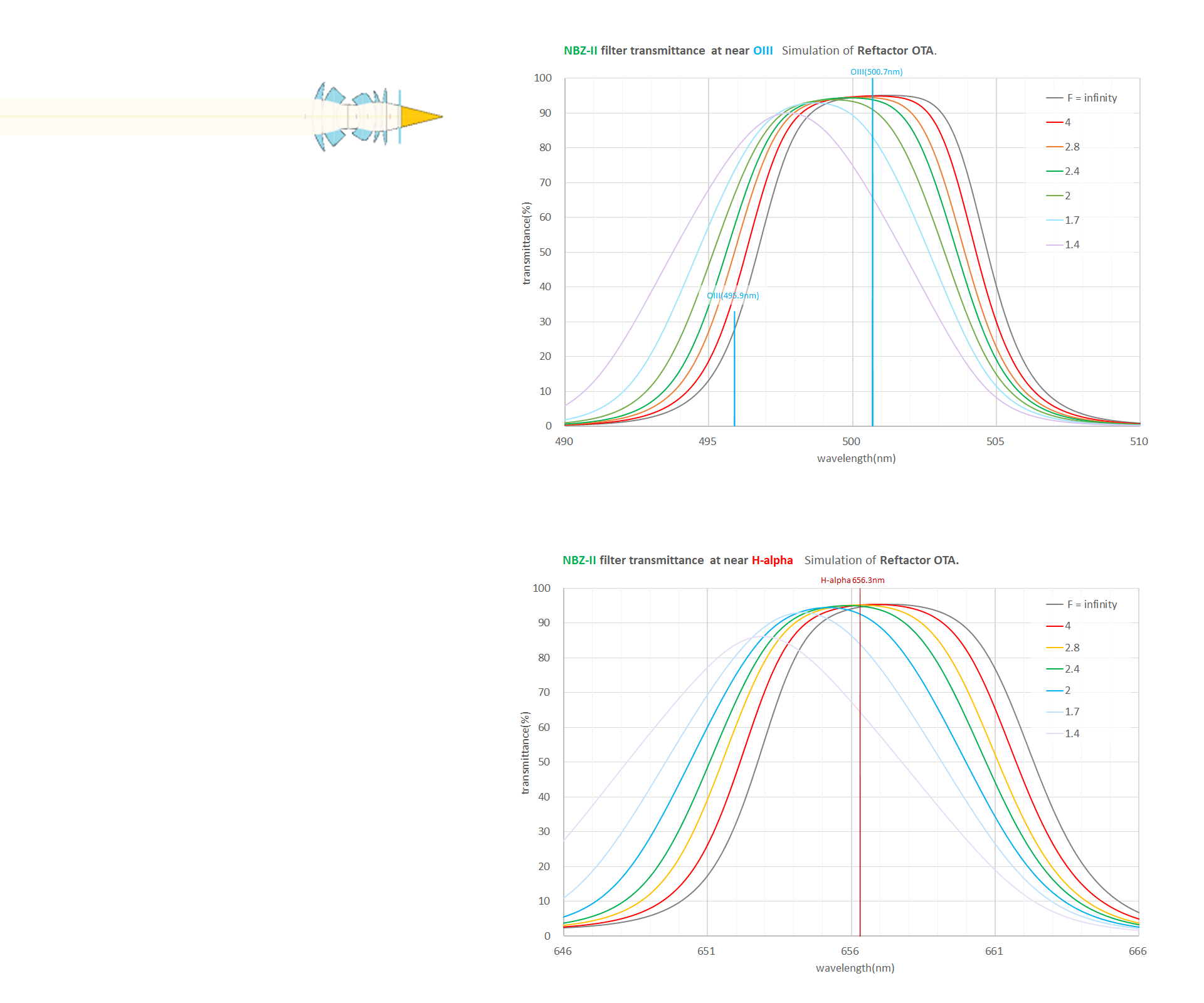
The shift tendency will be stronger in optical systems that have a central obstruction. Taking this into consideration, we have designed the NBZ-II as you can see from the following simulations:

|

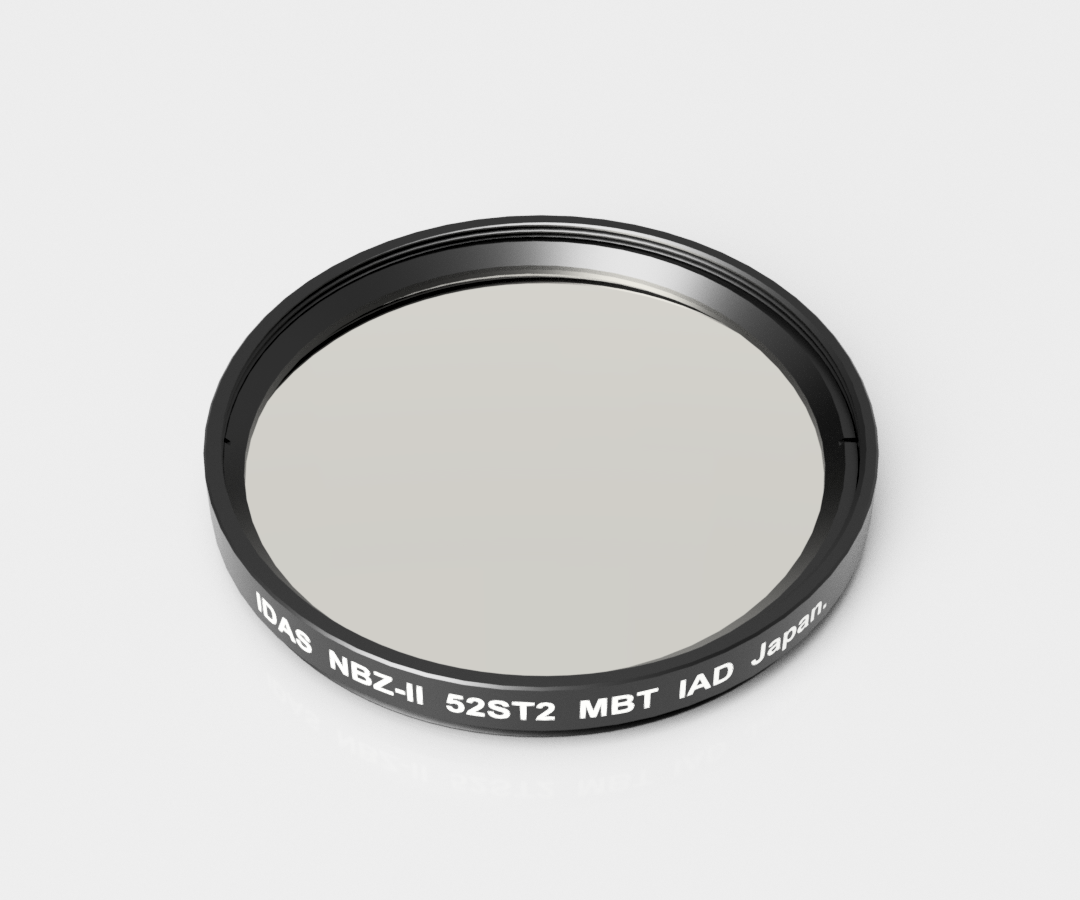
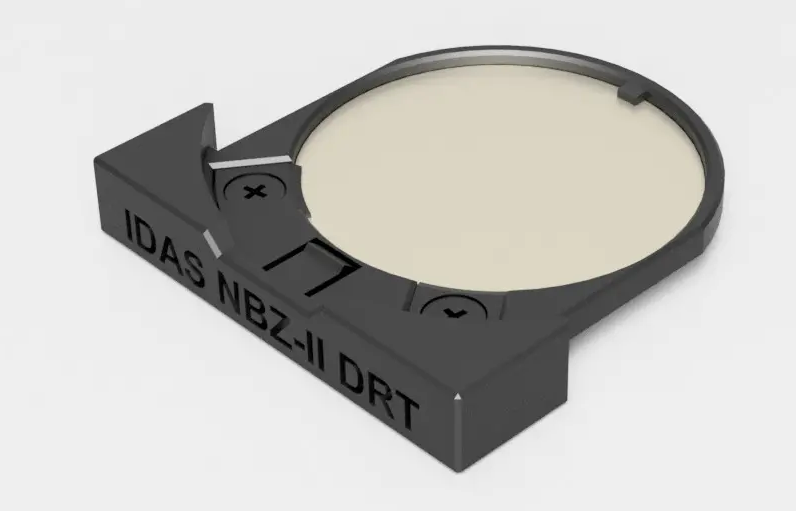

NBZ-II-data.png)
NBZ-II-data.png)







